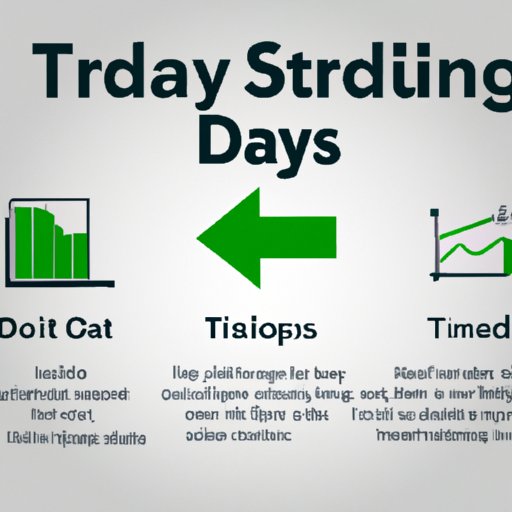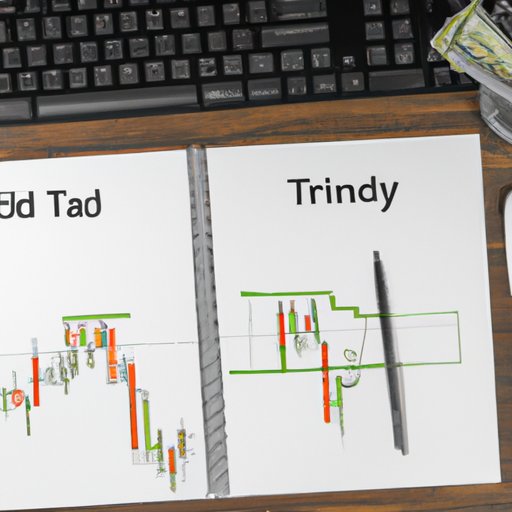Introduction
Day trading is a popular form of investing that involves buying and selling financial instruments within the same trading day. This type of investment strategy can be beneficial for investors who are looking for short-term returns and want to take advantage of price fluctuations in the market. By understanding the basics of day trading and developing a well-defined trading plan, traders can potentially increase their chances of success.
Definition of Day Trading
Day trading is defined as a practice of opening and closing trades on the same day. Traders will usually buy and sell a variety of securities such as stocks, options, futures, currencies and commodities. The goal of day trading is to capitalize on short-term price movements by making frequent trades and exiting positions quickly. As the name implies, all trades must be completed within the same trading day and no overnight positions are held.
Benefits of Day Trading
There are several benefits to day trading. First, it allows traders to take advantage of short-term price movements without having to hold a position for an extended period of time. This can help traders limit their losses if the market moves against them. Second, day trading can provide traders with more control over their investments since they are able to make quick decisions based on real-time data. Finally, day trading can be an attractive option for traders who do not have a lot of capital since it does not require large amounts of money to get started.

Types of Day Trading Strategies
When it comes to day trading, there are several different strategies that can be employed. Some of the most popular day trading strategies include scalping, momentum trading, and swing trading. Let’s take a closer look at each one.
Scalping
Scalping is a popular day trading strategy that involves taking small profits on a series of trades over a short period of time. Traders who use this strategy typically focus on making many small trades throughout the day, usually lasting less than five minutes. Scalpers try to take advantage of small price movements in the market and may employ technical indicators to identify entry and exit points.
Momentum Trading
Momentum trading is another popular day trading strategy. This strategy involves identifying stocks or other securities that are trending in a particular direction and taking advantage of the price movements. Momentum traders typically focus on stocks that have recently experienced large price swings and try to capitalize on the momentum.
Swing Trading
Swing trading is a longer-term trading strategy that involves taking advantage of price swings in the market. Swing traders typically hold positions for several days or weeks and try to identify larger price movements. This strategy requires more patience than scalping or momentum trading, but it can be an effective way to capitalize on price movements in the market.
Developing a Trading Plan
It is important for traders to develop a well-defined trading plan before they begin day trading. A trading plan should include key elements such as a trading strategy, risk management techniques, and a profit-taking strategy. This will help traders stay focused and disciplined while trading and will help them make better decisions when faced with potential trading opportunities.
Key Elements of a Trading Plan
A trading plan should include a trading strategy, which outlines the types of securities to trade and the criteria for entering and exiting trades. It should also include a risk management strategy, which outlines the amount of capital to be allocated to each trade and the maximum risk per trade. Finally, a trading plan should include a profit-taking strategy, which outlines the target levels for profits and losses.
Risk Management Techniques
In addition to having a well-defined trading plan, it is important for traders to employ risk management techniques. These techniques can include setting stop-loss orders and limiting the amount of capital to be allocated to each trade. Risk management techniques can help traders minimize losses and protect their capital.

Tools and Resources for Day Traders
There are a variety of tools and resources available for day traders. These include charting software, news websites, economic calendars, and more. Let’s take a closer look at some of these tools and resources.
Charting Software
Charting software is a valuable tool for day traders. This software allows traders to view price charts in real-time and identify potential trading opportunities. Popular charting software includes MetaTrader, TradingView, and Thinkorswim. Charting software can help traders make informed decisions when placing trades.
News Websites
News websites are another useful resource for day traders. These websites provide up-to-date information on the markets, allowing traders to stay informed of any changes that may affect their trades. Popular news websites include Bloomberg, CNBC, and MarketWatch.
Economic Calendars
Economic calendars are an essential tool for day traders. These calendars provide information about upcoming economic events such as interest rate decisions, GDP reports, and employment figures. Economic calendars can help traders anticipate price movements in the markets and make better trading decisions.
Setting Up a Day Trading Account
Before beginning day trading, it is important to set up a day trading account. This account will allow traders to place trades in the markets and manage their funds. When selecting a broker, it is important to compare fees, commissions, and available trading platforms. Once the account has been set up, it is important to fund it with enough capital to cover trading costs and potential losses.
Conclusion
Day trading is a popular form of investing that involves buying and selling financial instruments within the same trading day. It can be a profitable activity for those who understand the basics and develop a well-defined trading plan. There are several different day trading strategies, tools, and resources available to traders, and it is important to select the right ones for your trading style. Finally, it is important to set up a day trading account and fund it with enough capital to cover trading costs and potential losses.
(Note: Is this article not meeting your expectations? Do you have knowledge or insights to share? Unlock new opportunities and expand your reach by joining our authors team. Click Registration to join us and share your expertise with our readers.)
